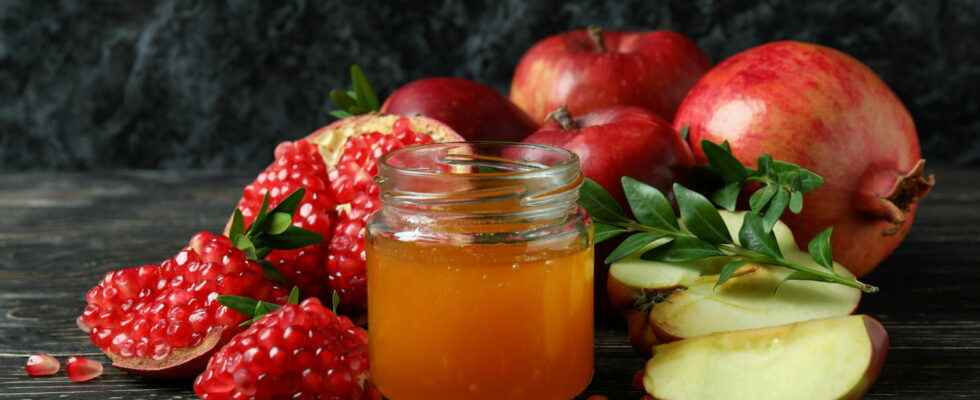[ROCH HACHANA] Rosh Hashanah is the Jewish New Year. It commemorates the creation of the world and the day of judgment and is closely linked to the day of “great forgiveness”, Yom Kippur, from which it is separated by the ten days of penance. What are the specific dates and times this year? What rites and customs do we practice? Answers.
What are the dates and times for Rosh Hashanah in 2022?
This year, the party starts in the early evening on Sunday, September 25, 2022, and ends Tuesday, September 27 in the evening. The schedules vary according to the geographical location, depending on those of sunset for the entrance to the party, and of nightfall for its exit. In Paris, for example, the party will start at 7:26 p.m. precisely, and end at 8:25 p.m. In Marseille, the party will start a little earlier, at 7:16 p.m., and will end at 8:09 p.m. The two days during which the holiday lasts in France must, according to Jewish law, be non-working.
Rosh Hashanah means the “head of the year” and thus corresponds to the Jewish New Year. This traditional holiday precedes Yom Kippur, which takes place 10 days later and refers to the creation of Adam and Eve. Referred to in the Bible as “Ringing Day”, Rosh Hashanah is a moment of introspection since it is a question, for the practitioners, of review the year. Good resolutions will naturally follow this examination of conscience.
In Hebrew, the H is often guttural, but for Rosh Hashanah, the H of the second word is not pronounced. So we pronounce “roche-achana”
- Mikvah. On the eve of Rosh Hashanah, as with most Jewish holidays, Jews can immerse themselves in the Mikveh, the ritual bath. This rite of purification will allow them to pray in the best conditions on the day of judgment.
- Listen to the Shofar. Participating in the ceremony at the synagogue is also an important part of Rosh Hashanah, where the Torah is read. It is customary during the Jewish New Year festivities to blow the shofar, musical instrument made from a ram’s horn, for repentance, during the two feast days.
- The Tashlik. Another symbolic ritual for the faithful, the Tashlikh consists of going on the afternoon of Rosh Hashanah near a stream in order to throw pieces of bread or pebbles into it. A way to symbolically shed the sins of the past year.
- A feast meal. As with most Jewish holidays, the lighting of the candles is followed by a festive meal and blessings over wine and challah. Referring to the bread in Hebrew, (traditionally a brioche bread) the allah has on this day a circular shape to evoke the cycle of the year. Traditionally, it is tasted with honey.
Which meal for Rosh Hashanah?
The soft and sweet dishes are privileged during the celebration of Rosh Hashanah. Apples dipped in honey, dates, figs, squash, and pomegranates garnish the tables. Thus, the pomegranate, having many seeds, symbolizes abundance, honey, sweetness. Another custom: the fish head that is eaten to express the wish to always be in the lead and to master situations with intelligence and wisdom. We also taste a “new fruit”, on which a special prayer (Cheheyanou) is made. It is a fruit not consumed since it was out of season (usually figs, pomegranates, dates or prickly pears…). Sour or bitter dishes are not welcome on Rosh Hashanah celebrations. To benefit from a “sweet year”, we try above all to consume foods in this image… According to customs, families cook couscous, lamb and potatoes, or the famous Tafina…
It is by the use of the expression “Shana tova oumetouka“, in other words “happy new year” that the Jews wish each other a happy new year. However, this is not the only expression that you will be able to hear. Before Rosh Hashanah, the Jews, for example, gladly use the formula “Ketiva va’hatima tova“, Where “Gmar Hatima Tova”, meaning “A good inscription and a good seal in the book of life”. As with all Jewish holidays, one can also simply wish a Happy Hag Sameah Day
When to say “Shana Tova”?
The expression Shana Tova is used throughout Rosh Hashanah and until Yom Kippur, to wish a happy holiday to his loved ones.
